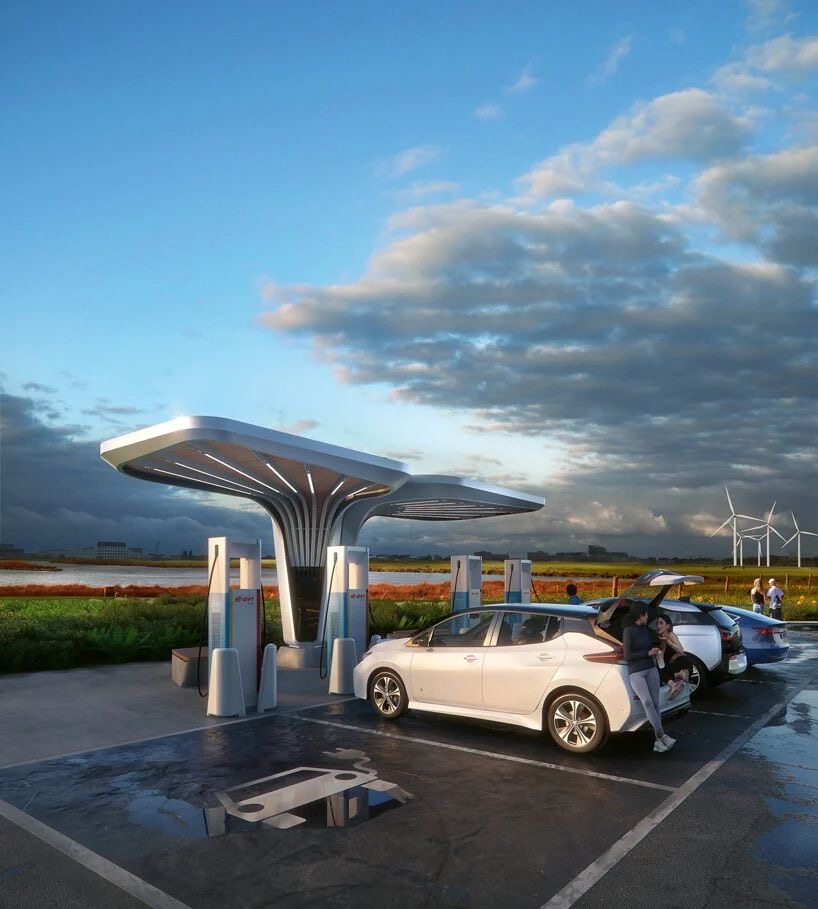Having worked in commercial real estate for the past 10 years, I understand the ins and outs of property management, finances, and what it takes to run a profitable asset. ESG can often feel aloof—just another compliance headache. But through my experience with ESG technologies, utilities, and the commercial real estate world, I’ve seen firsthand that it’s much more than a regulatory checkbox. ESG is the path to a higher internal rate of return (IRR) and long-term asset success.
Future-Proofing & Tenant Appeal
Smart buildings, energy-efficient designs, and data-driven operations are the new standard. ESG technology ensures properties remain relevant and desirable in an increasingly competitive market.
EV charging stations attract eco-conscious tenants and hotel operators who are willing to pay premium rates for sustainable amenities. Heat pumps and insulation improve energy efficiency and maintain consistent temperatures across units, reducing tenant complaints and turnover. Building automation systems that optimize lighting, HVAC, and water usage create environments that modern tenants expect.
The data is clear: properties with strong ESG credentials have lower vacancy rates on average, according to a RICS study. That’s not just good for the planet—it’s good business.
Affordability & Cost Efficiency
Sustainability reduces costs. Demand response for energy management, LED lighting, and renewable energy integration lower expenses, benefiting both owners and tenants.
Solar panels reduce grid reliance and hedge against rising demand charges, while battery storage ensures power availability during outages. Energy management systems can reduce consumption by 15-30% with minimal capital investment, creating immediate positive cash flow, as documented by the U.S. Department of Energy’s Better Buildings Initiative.
In my experience working with multifamily and office properties, utility costs typically represent 25-35% of operating expenses. ESG technology directly targets these costs, improving NOI and asset value without requiring rental increases.
Risk Reduction & Insurability
Climate risks are real and costly. ESG technology helps track and mitigate these risks, making properties more insurable and lowering premiums.
Resilient buildings with strong ESG frameworks attract investors and lenders, increasing asset value and improving financing terms. Properties with documented climate resilience measures are seeing insurance premium reductions of 5-15% in high-risk areas, according to McKinsey’s Climate Risk and Response report.
As extreme weather events become more common, the gap between ESG-equipped properties and traditional buildings will only widen. Forward-thinking owners are installing flood monitoring systems, resilient power infrastructure, and advanced HVAC systems now—before these become mandatory or prohibitively expensive. For New York property owners, Local Law 97 compliance is already creating urgency around these upgrades.
Profitability & Market Advantage
ESG tech isn’t just about sustainability—it’s a financial advantage. Green buildings command higher rents, attract top-tier tenants, and often have better resale values.
Investors favor sustainable properties, positioning ESG-focused owners for long-term success. Cap rates for buildings with strong ESG credentials are compressing 25-50 basis points compared to conventional properties, directly translating to higher valuations, as reported by CBRE’s Global Investor Intentions Survey.
The most successful property owners aren’t just implementing the technology—they’re also taking advantage of available rebate administration programs to offset upfront costs and accelerate their return on investment.
Final Thoughts
ESG technology is a smart investment. It future-proofs assets, cuts costs, reduces risk, and enhances profitability. Owners who prioritize ESG tech now will lead the market in the future.
Ready to integrate ESG technology into your properties? Contact us to make it happen.




